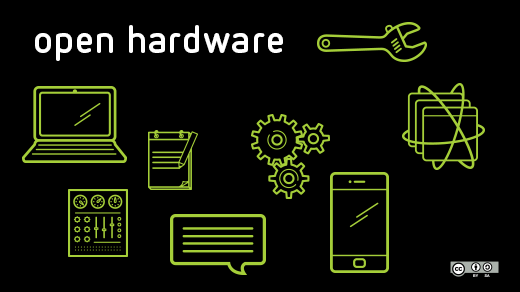Open-Source Hardware Is the Future
Sunday, January 07, 2024What is Open-Source Hardware and Why Should You Care?
Open-source hardware is a term for physical devices that are designed and shared with the public in a way that anyone can study, modify, create, and distribute them. Unlike proprietary hardware, open-source hardware gives you more control, freedom, and transparency over your devices. You can customize them to suit your needs, fix them if they break, and even improve them for the benefit of others.
Some examples of open-source hardware are:
- The Librem 5 phone: A security and privacy-focused smartphone that runs on PureOS, a free and open-source operating system based on GNU/Linux. It features hardware kill switches to physically disconnect WiFi, Bluetooth, cellular signal, microphone, and camera. It also supports mobile/desktop convergence, meaning you can use it as a desktop computer when connected to a keyboard, screen, and mouse.
- The Librem 14 laptop: A powerful and ultra-portable laptop that respects your rights to privacy, security, and freedom. It runs on PureOS and comes with PureBoot, a secure boot process that protects you from tampering and malicious software. It also features hardware kill switches and a user-replaceable battery.
- The RepRap project: A community-driven initiative to create self-replicating 3D printers that can print most of their own parts. The goal is to make 3D printing accessible and affordable for everyone, and to enable the creation of diverse and useful objects.
- The PineTime: A open source smartwatch that can run custom-built operating systems. It has a heart rate monitor, a week-long battery, and a touch screen display that is legible in direct sunlight. It is a community-driven project by PINE64, a company that makes low-cost devices that support Linux and other open-source software. The PineTime works with various companion apps that can update its firmware, send notifications, and sync data with other devices. You can find more information about the PineTime on its official website or its wiki page.
Benefits of Open-Source Hardware
There are many reasons why you might want to choose open-source hardware over proprietary alternatives. Some of the benefits are:
- You own your device: You don’t have to worry about being locked into a vendor’s ecosystem, being forced to accept unwanted updates, or having your device become obsolete or unsupported. You can use your device as long as you want, and you can modify it to fit your preferences and needs.
- You protect your privacy: You don’t have to trust a company with your personal data, or expose yourself to potential surveillance, tracking, or hacking. You can choose what software to run on your device, and what information to share or not. You can also use hardware kill switches to physically disable any sensors or radios that might compromise your privacy.
- You enhance your security: You don’t have to rely on a company’s security practices, or risk being affected by vulnerabilities, bugs, or back-doors. You can verify the source code and design of your device, and make sure it is free from malicious software or hardware. You can also use secure boot and encryption to protect your device from unauthorized access or tampering.
- You support innovation: You don’t have to settle for what a company offers you, or wait for them to release new features or improvements. You can experiment with new ideas, create new functionalities, or improve existing ones. You can also collaborate with other users and developers, and contribute to the advancement of technology and society.
How to Get Started with Open-Source Hardware
If you are interested in open-source hardware, there are many ways to get started. You can:
- Buy an open-source device: There are many companies and projects that sell open-source hardware devices, such as Purism, Pine64, Arduino, and Raspberry Pi. You can browse their websites and find a device that suits your needs and budget.
- Build your own device: There are many resources and tutorials online that can help you build your own open-source hardware device, such as Instructables, Hackaday, and Adafruit. You can find a project that interests you, and follow the instructions to assemble and program your device.
- Join a community: There are many communities and forums online where you can learn more about open-source hardware, ask questions, share your projects, and get feedback. Some examples are the Open Source Hardware Association, the Open Source Hardware and Design Alliance, and the RepRap Forum. You can also attend events and meetups, such as the Open Hardware Summit and the Maker Faire.
Conclusion
Open-source hardware is a great way to take control of your devices, protect your privacy and security, and support innovation and collaboration. Whether you want to buy, build, or join, there is an open-source hardware option for you. I hope this blog post has inspired you to explore the world of open-source hardware and discover its benefits and possibilities. Thank you for reading! 😊

